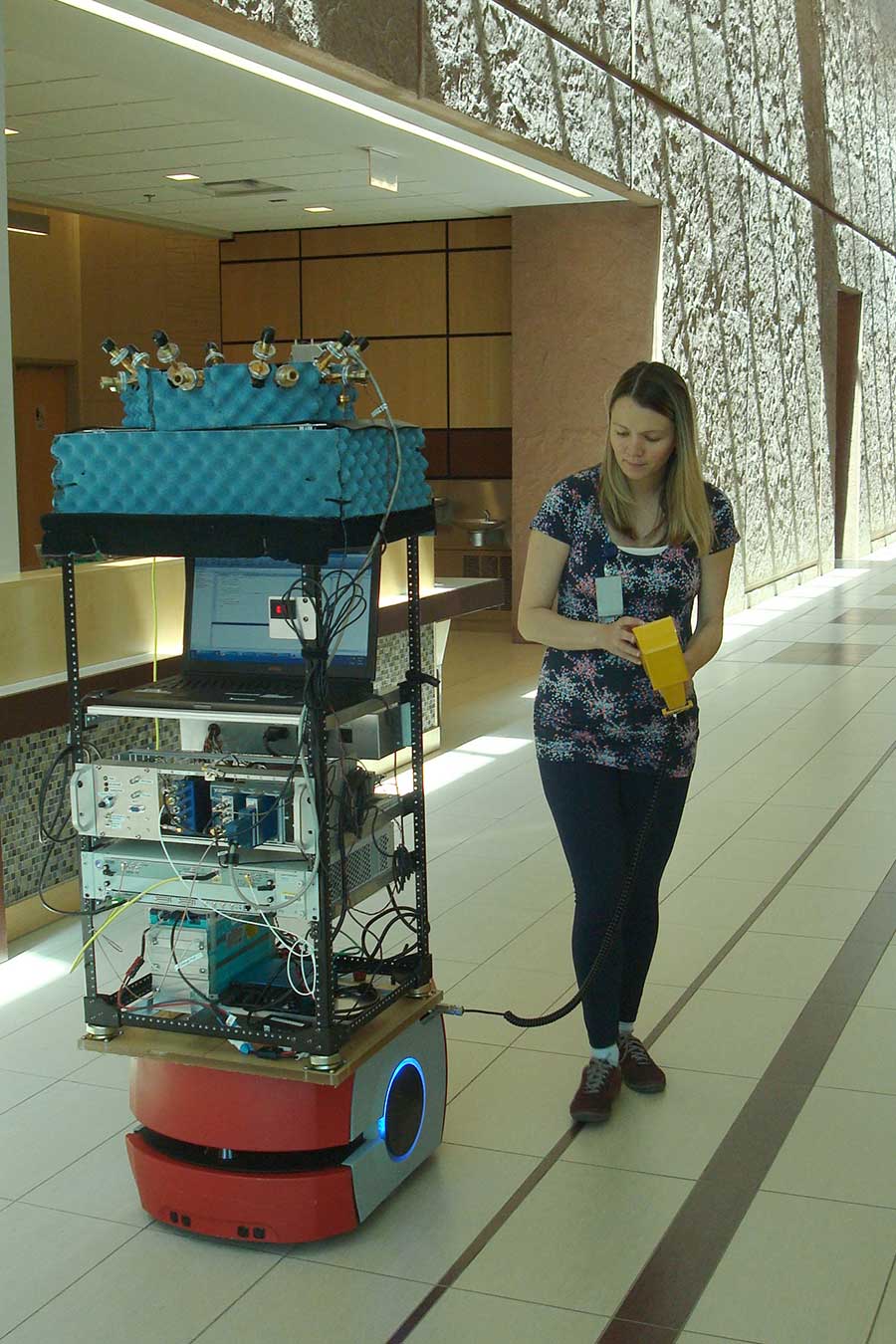5G will be a system of systems that extend far beyond radio. 5G systems will avoid crowded conventional wireless channels by using higher, millimeter-wave frequency bands. Transmissions at these frequencies lose a lot of energy along the way, which weakens received signal strength.
The solution is smart antennas that can perform unusually narrow beams- the area in space where signals are transmitted or received—and rapidly steer them in different directions.
Scientists at the NIST developed a strategy for assessing and choosing optimal antenna design structures for future fifth-generation (5G) cellphones, wireless gadgets, and base stations.
According to scientists, this new measurement-based method allows system designers and engineers to evaluate the most appropriate antenna bandwidths for real environments.

Credit: NIST
NIST engineer Kate Remley said, “Our new method could reduce costs by enabling greater success with initial network design, eliminating much of the trial and error that is now required. The method also would foster the use of new base stations that transmit to several users either simultaneously or in rapid succession without one antenna beam interfering with another. This, in turn, would increase network capacity and reduce costs with higher reliability.”
“This is the first detailed measurement-based study of how antenna beamwidth and orientation interact with the environment to affect millimeter-wave signal transmission.”
The measurements involve a broad range of antenna beam angles that are converted into an omnidirectional antenna pattern covering all angles equally. The omnidirectional pattern could then be sectioned into narrower and narrower bandwidths. Clients can assess and model how antenna beam attributes are relied upon to perform in explicit sorts of wireless channels.
For this method, scientists collected experimental data in a hallway and lobby of a NIST research building. They used a special robot loaded with a customized channel sounder and other equipment.
A channel sounder collects data capturing the signal reflections, diffractions, and scattering between a transmitter and receiver. Many such measurements can be used to create a statistical representation of the radio channel, to support reliable system design and standardization.
The study outcomes demonstrated that narrow beams can significantly reduce signal interference and delays and that an optimized beam orientation reduces energy loss during transmissions.
For example, the time interval during which signal reflections arrive (a metric called RMS delay spread) dropped dramatically from 15 nanoseconds (ns) to about 1.4 ns as antenna beamwidth was reduced from omnidirectional (360 degrees) to a narrow 3 degrees or so-called pencil beam.
The study is published in the journal IEEE Communications Magazine.
